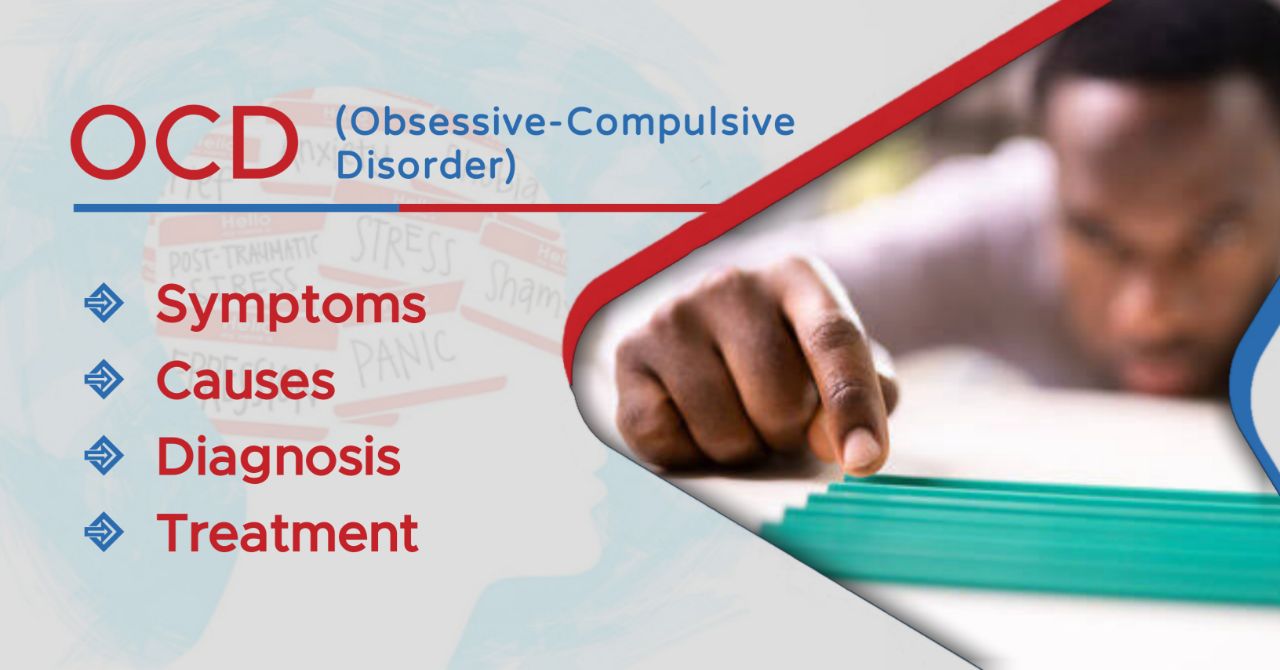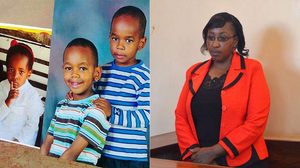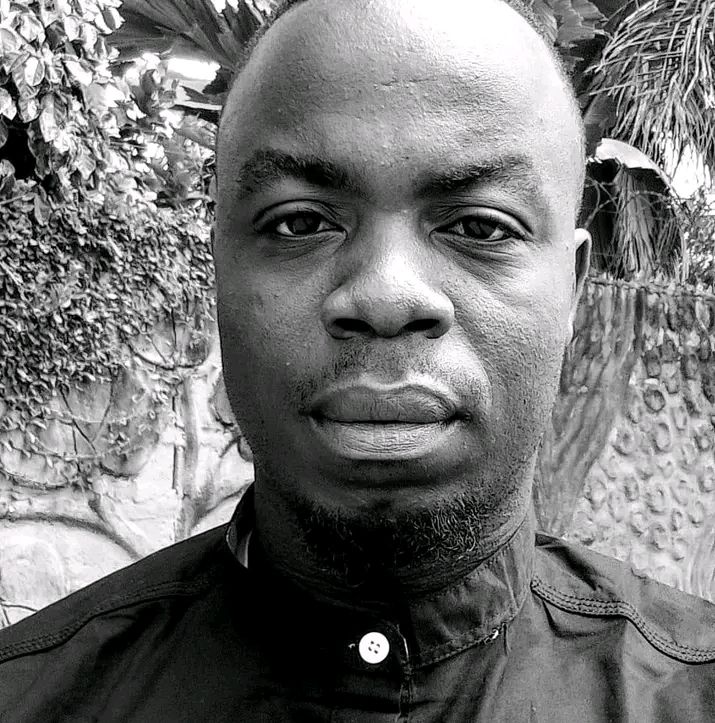
Obsessive-Compulsive Disorder (OCD)
Reading Time: 6min
What is OCD?
Table of Contents
Obsessive-Compulsive Disorder (OCD) is a common, chronic, and long-lasting mental health disorder in which a person has uncontrollable, reoccurring thoughts (obsessions) and/or behaviors (compulsions) that they feel the urge to repeat over and over.
It is important to note that OCD is more than just being tidy or liking order. It causes significant distress, interferes significantly with a person's daily life, and is often time-consuming.
The Core Components: Obsessions and Compulsions
1. Obsessions: Unwanted, Intrusive Thoughts
Obsessions are repeated, persistent, and unwanted thoughts, urges, or mental images that cause intense anxiety or distress. The person tries to ignore or suppress them or to neutralize them with another thought or action (a compulsion).
Common Obsession Themes Include:
Contamination: Fear of germs, dirt, or illness.
Harm: Fear of harming oneself or others, or that something terrible will happen.
Symmetry and Order: A need for things to be "just right" or perfectly aligned.
Unwanted Sexual or Violent Thoughts: Aggressive or horrific thoughts that are disturbing and out of character.
Religious or Moral Scrupulosity: Excessive concern with morality, right vs. wrong, or offending God.
2. Compulsions: Repetitive Behaviors
Compulsions (or rituals) are repetitive behaviors or mental acts that a person feels driven to perform in response to an obsessive thought. The behaviors are aimed at preventing or reducing anxiety or preventing a dreaded event. However, these compulsions are not connected in a realistic way to the problem they are intended to address, or they are clearly excessive.
Common Compulsion Themes Include:
Washing and Cleaning: Excessive hand washing, showering, or cleaning of household items.
Checking: Repeatedly checking that the door is locked, the oven is off, or that no one was harmed.
Counting: Counting in certain patterns or to a specific "safe" number.
Ordering and Arranging: Arranging items in a very specific, precise way.
Mental Rituals: Praying, repeating words silently, or reviewing events in one's mind to prevent harm.
The OCD Cycle
OCD typically follows a vicious cycle:
Obsession: An intrusive thought, image, or urge enters the mind.
Anxiety: The obsession triggers intense feelings of fear, doubt, or disgust.
Compulsion: The person feels compelled to perform a ritual to neutralize the thought and reduce the anxiety.
Temporary Relief: The compulsion provides short-term relief from the anxiety.
Reinforcement: The temporary relief reinforces the power of the obsession, making it more likely to return, thus strengthening the cycle.
Causes and Risk Factors
The exact cause of OCD is not fully understood, but it is linked to several factors:
Genetics: OCD has a strong genetic component. Having a first-degree relative with OCD increases the risk.
Brain Structure and Functioning: Imaging studies have shown differences in the frontal cortex and subcortical structures of the brain, as well as in the communication between these areas involving the neurotransmitter serotonin.
Environment: Traumatic life events, abuse, or significant stress can trigger the onset or worsening of symptoms in those with a predisposition.
PANDAS: In some children, OCD symptoms can appear suddenly after a streptococcal infection (like strep throat). This is known as PANDAS (Pediatric Autoimmune Neuropsychiatric Disorders Associated with Streptococcal Infections).
Diagnosis and Treatment
A diagnosis is made by a qualified mental health professional based on clinical criteria, including the presence of obsessions and/or compulsions that are time-consuming (take more than one hour a day) and cause significant distress or impairment.
Effective treatment often involves a combination of:
Psychotherapy:
Exposure and Response Prevention (ERP) is the gold standard therapy for OCD. In ERP, individuals are gradually exposed to their feared thoughts or situations (exposure) and learn to resist the urge to perform their compulsive rituals (response prevention). This process helps break the cycle of OCD.
Medication:
Selective Serotonin Reuptake Inhibitors (SSRIs) are the most commonly prescribed medications for OCD. They help increase serotonin levels in the brain and are often used at higher doses than for depression.
Other antidepressant medications may also be used if SSRIs are not effective.
Neuromodulation:
For severe, treatment-resistant OCD, procedures like Transcranial Magnetic Stimulation (TMS) or Deep Brain Stimulation (DBS) may be considered.
Myths vs. Facts
Myth: OCD is about being overly tidy and organized.
Fact: While some have obsessions about order, OCD covers a wide range of intrusive thoughts and rituals. The core is the cycle of anxiety-driven obsessions and compulsions, not personality traits.
Myth: People with OCD can just stop if they really want to.
Fact: OCD is a neurobiological disorder, not a choice. The urge to perform a compulsion can feel as powerful as a physical need, like the urge to blink.
Myth: Everyone is "a little bit OCD."
Fact: This phrase minimizes the debilitating reality of the disorder. Having preferences or being meticulous is not the same as having OCD, which is a diagnosed medical condition that causes significant distress and impairment.
How to Support Someone with OCD
Educate yourself about the disorder.
Be patient and non-judgmental. Avoid criticizing or telling them to "just stop."
Don't enable rituals. While it's difficult, participating in or accommodating compulsions only reinforces the OCD cycle.
Encourage treatment. Gently support them in seeking and sticking with ERP therapy.
Communicate positively. Focus on the person, not the disorder. Praise their efforts and successes.
Chiromo Hospital Group
This private hospital group is a recognized provider of mental health services in Kenya. They explicitly list Obsessive-Compulsive Disorder (OCD) among the conditions they treat. You can contact them directly for assessment and treatment options.
Official Website: chiromohospitalgroup.co.ke
National Mental Health Context & Future Developments
While a national OCD-specific helpline or charity wasn't listed, understanding the broader context can be helpful.
National Guidelines: Kenya's Ministry of Health has published National Clinical Guidelines for Management of Common Mental Disorders
This indicates that the government is working to standardize and improve care for conditions that likely include OCD.
Building Local Expertise: There is a positive development in training. In mid-2024, clinicians from Kenyatta University and Mathari National Teaching and Referral Hospital were trained in an intensive, evidence-based treatment for OCD called the Bergen 4-Day Treatment (B4DT).
This suggests that specialized treatment options may become more available in public and academic institutions in the future.
How to Find More Support
To continue your search for support, you might consider these steps:
Consult General Mental Health Providers: Many psychologists and psychiatrists treat anxiety disorders, including OCD, even if it's not their only specialty. You can search for private practices and ask about their experience with OCD.
Reach Out to Training Institutions: Contact the psychology or psychiatry departments at major universities (like Kenyatta University)
They may offer lower-cost clinics or be able to provide referrals.
Look for Support Groups: While no groups were listed in the results, searching online for "mental health support groups Kenya" or inquiring with treatment providers could lead you to peer support options.









